If you’ve been in marketing for a while now, chances are you’ve heard of the term “link roundup”.
Bloggers and content creators have been using roundups as a way to…
- Build backlinks back to their website
- Build relationships with people from their industry
- Showcase their knowledge by curating the most valuable content that’s out there.
The truth is that, to hold a good expert roundup, you need to put in a lot of work.
At the same time, to get links from a link roundup, you need to have a process in place.
In this ultimate guide, I’m going to explain what link and expert roundups are, what the differences are, if they still work, and how you can use them as part of your link building strategy to grow your search traffic and connect with thought leaders in your space.
Let’s get into it.
Link building cheat sheet
What’s a Link Roundup?
Let’s start with the most obvious question.
What exactly is a link roundup?
Well, according to SEO agency Webris,
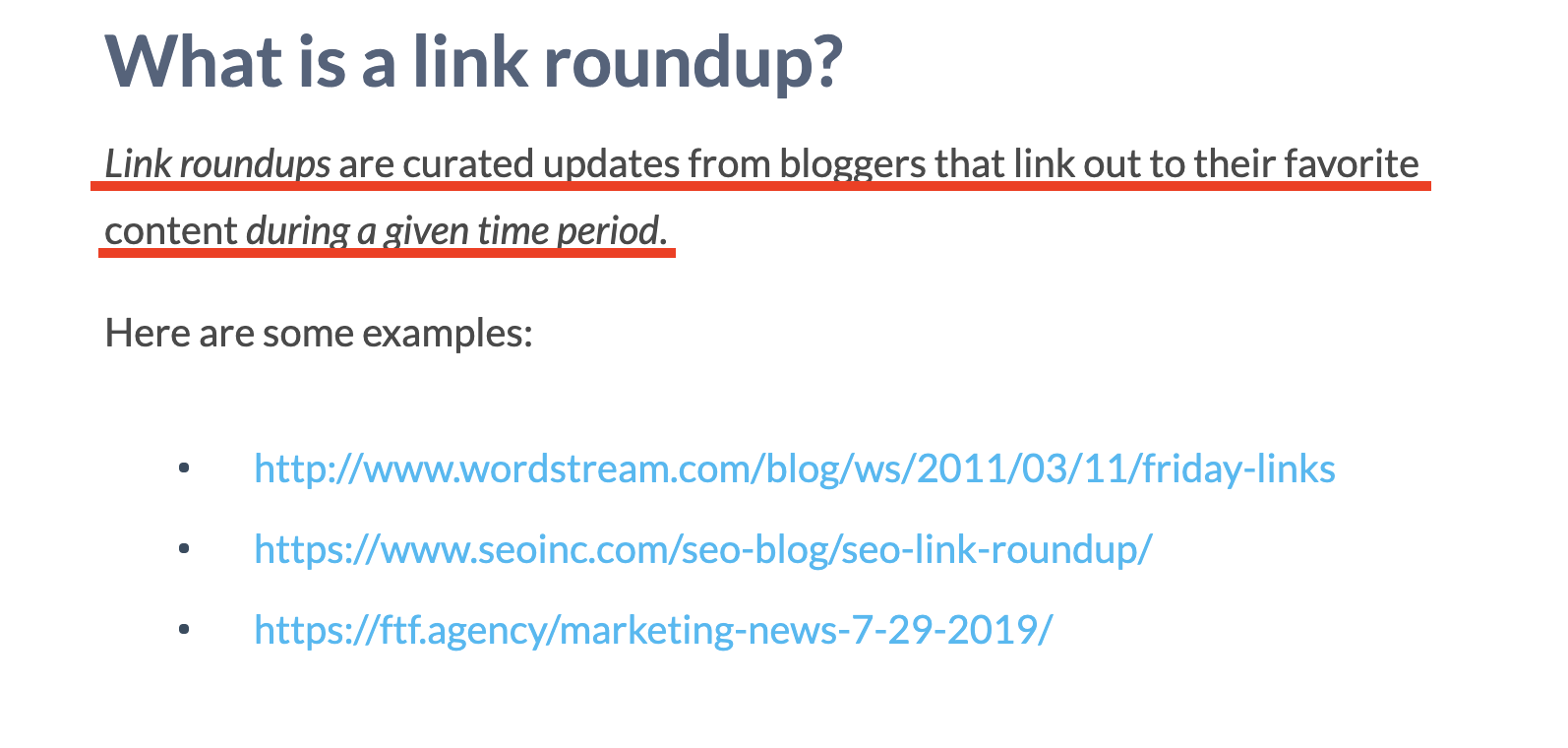
This means that roundups are lists of curated content from around the web on specific topics, e.g. SaaS marketing, over a specific time period.
For example, the screenshot below shows a quality link roundup post about SaaS, startups, and content marketing.
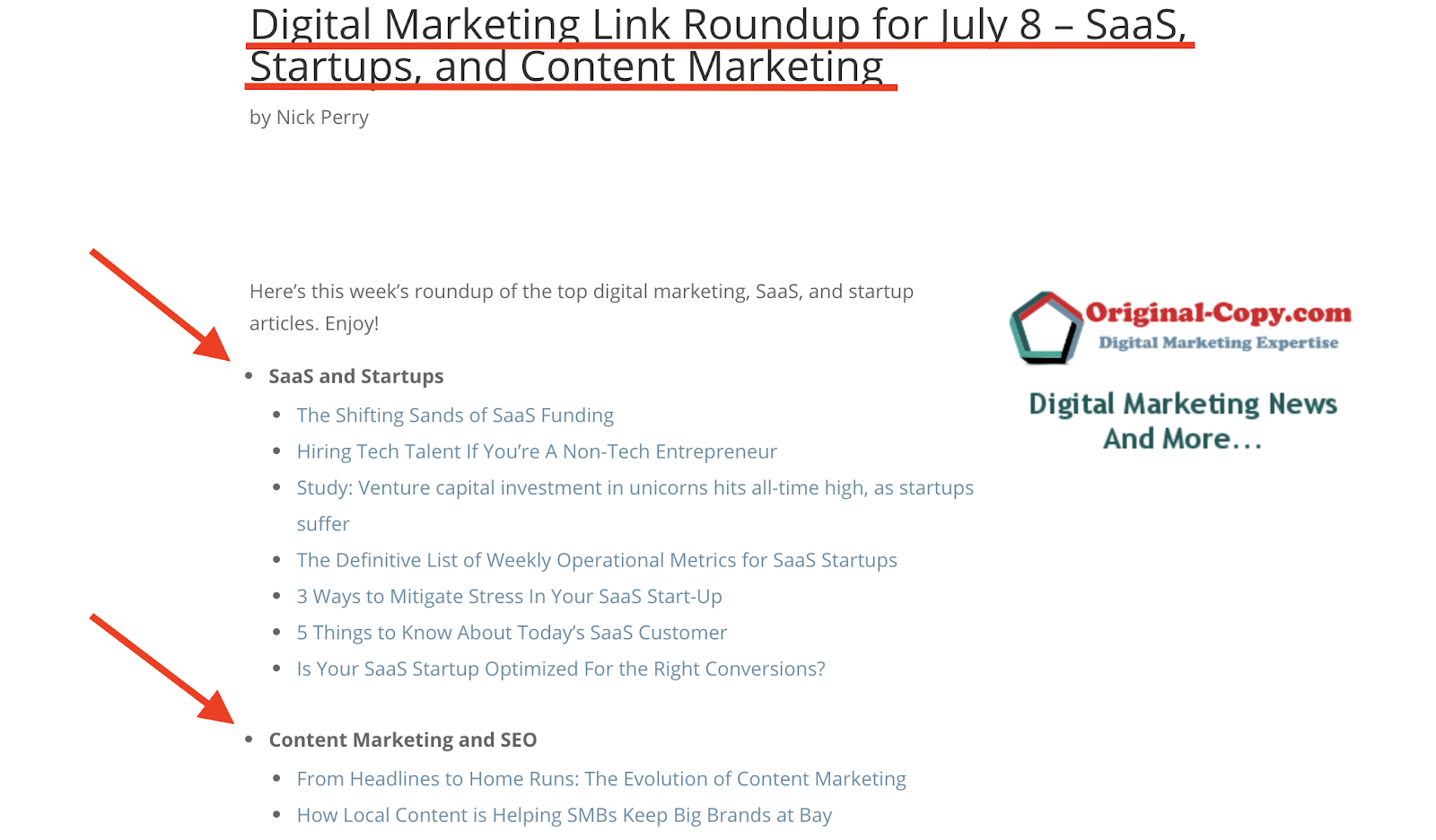
As you can see, the resources are split into two categories:
- SaaS and startups
- Content marketing and SEO
The roundup saved links that are listed in each category are the resources suggested by the author or publisher.
There is literally no limit to what topics you can find and do a roundup for.
From digital marketing to search engine optimization (SEO) and social media marketing, there are literally hundreds of topics that roundups can cover.
The most common type is a weekly link roundups, although you can also find monthly and yearly roundups.
These are all curations of great content in the form of a list, exactly like we saw earlier.
This is the first type of roundup.
The second type involves curating opinions from experts on a very specific topic and creating a content piece in the form of a list post.
According to HubSpot,
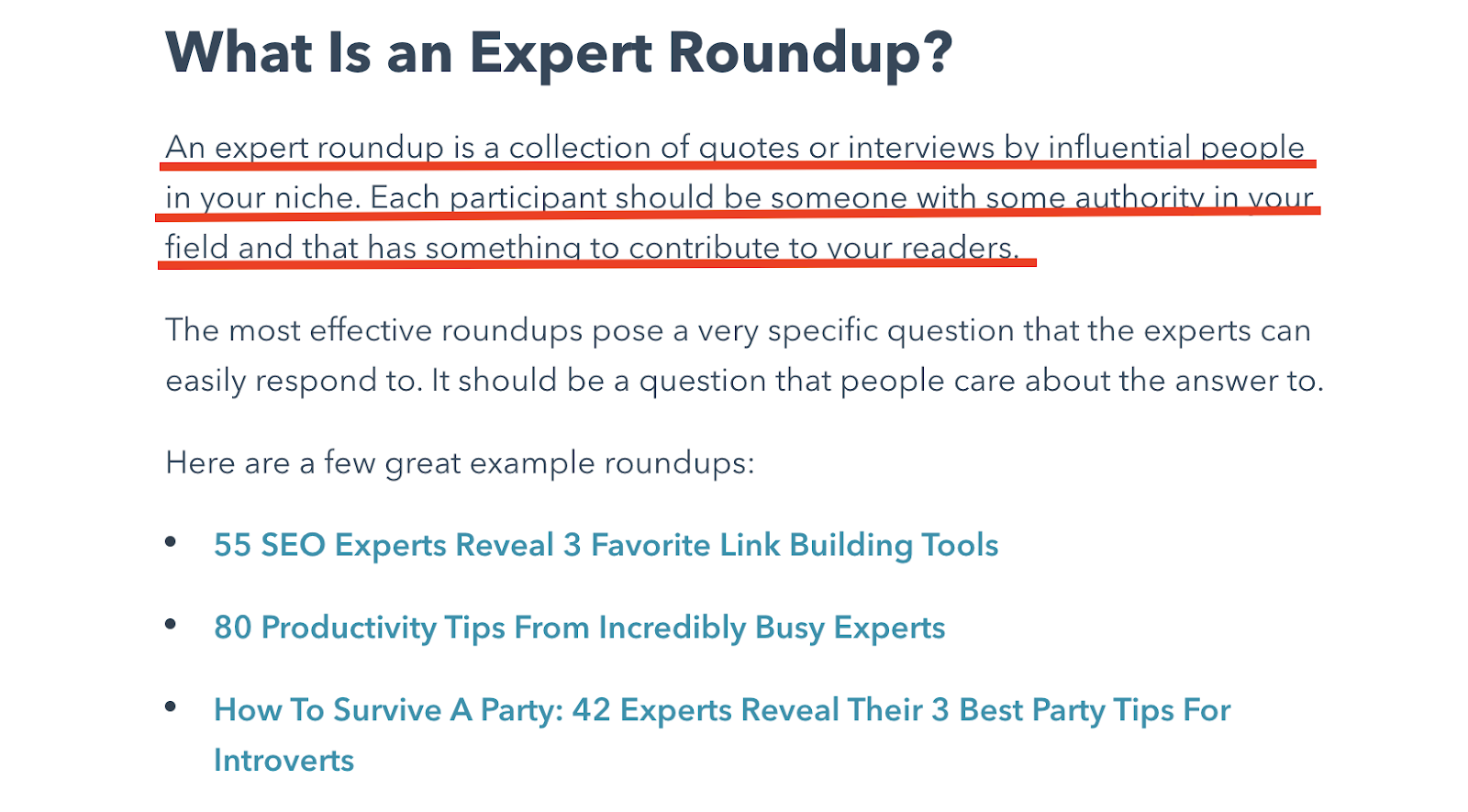
Here’s an example from RobbieRichards.com:
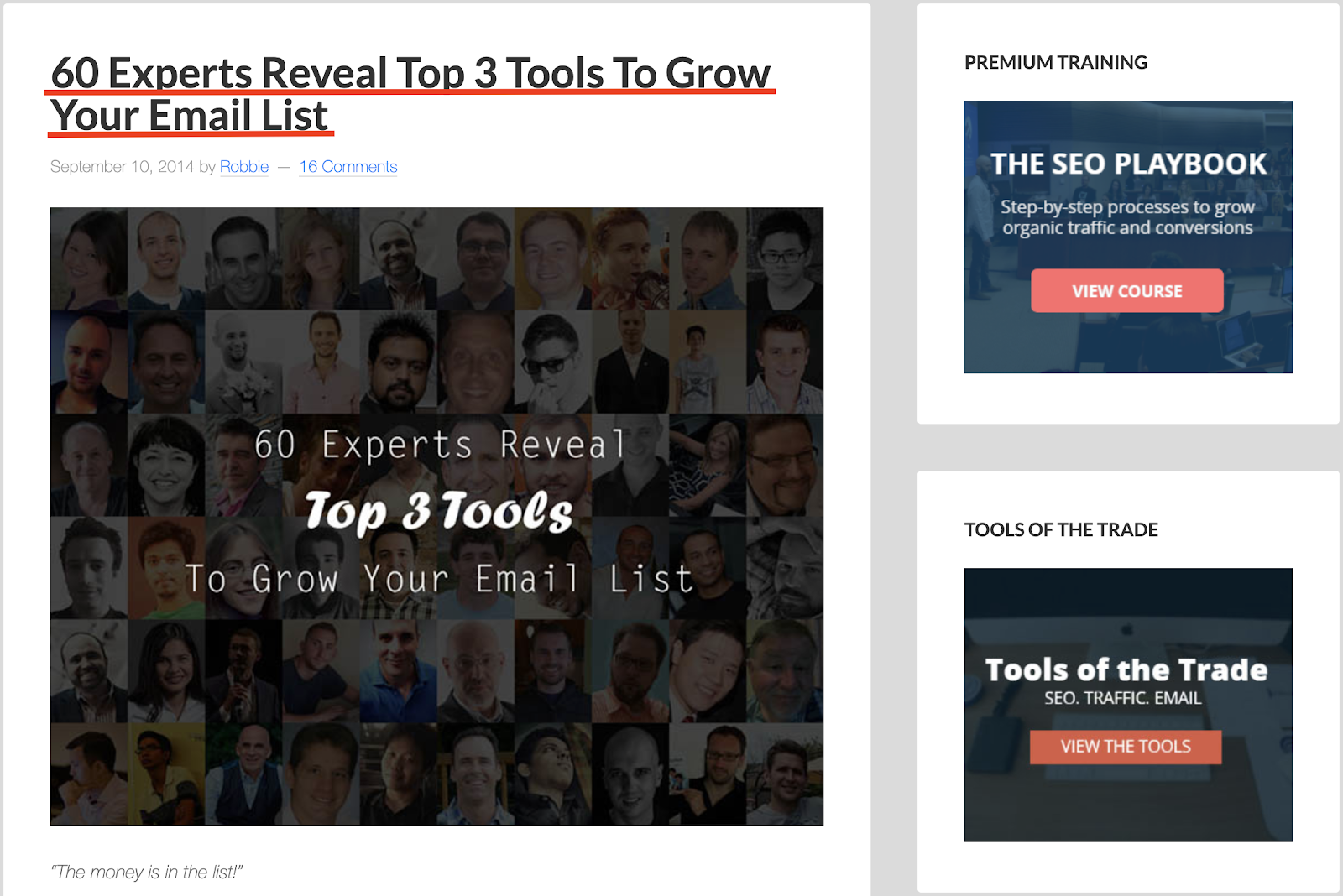
As you can see, this isn’t a link roundup, in the sense that it doesn’t contain links to great content that exists online.
This is what we call an expert roundup and it’s different to the one we saw earlier.
So far so good, but a question arises here:
Do link roundups and expert roundups still work in 2021?
This is what we’re going to cover next.
Do Link Roundups Still Work?
Purely from an interest and search perspective, we’d say that roundups are a blogging tactic that’s kind of outdated.
You can see that according to Google Trends, no one is searching for that term over the last five years.

This happens because no one is going to search for a roundup using just the term “roundup”.
The term has to be combined with something else to make sense.
Regardless, what you need to know as a content creator or website owner is that link roundups are often the easiest type of backlinks you can acquire.
The reason is simple:
People compiling those curated lists of content are always looking for fresh content using various search operators and advanced search filters on Google.
By reaching out and asking to be included in one, you’re making the creation process much easier for them.
The truth is that, if you want to leverage roundups as part of your strategy, you need to know – and probably use – both.
Why?
Well, because the first type, that’s link roundups, can be used for building links back to your website, while the second one can be used to build relationships with people in your industry.
Remember:
Link roundups can work great for acquiring links but other than that, don’t expect to improve your website traffic or have customers land on your website.
The quality of the traffic you’ll acquire won’t be what you’re used to.
Thus, the main benefit you can expect here is to acquire inbound links.
So far so good, but what about expert roundups?
Well, that’s a completely different story.
Remember the expert roundup post that we saw earlier from RobbieRichards.com?
According to Ahrefs, this is a piece of content that has 177 backlinks from 53 referring domains.

As you can see, it doesn’t get any organic traffic, but that’s by design.

There are two goals when creating an expert roundup:
- Acquire backlinks
- Make connections with people in your industry
Besides backlinks, those pieces get, in most cases, many social shares as well.
Just think of all the people who are participating in a related post and sharing it on their LinkedIn profile or sharing a Tweet about it.
This is massive.
For example, take a look at how many social shares another expert roundup post by RobbieRichards.com has got:
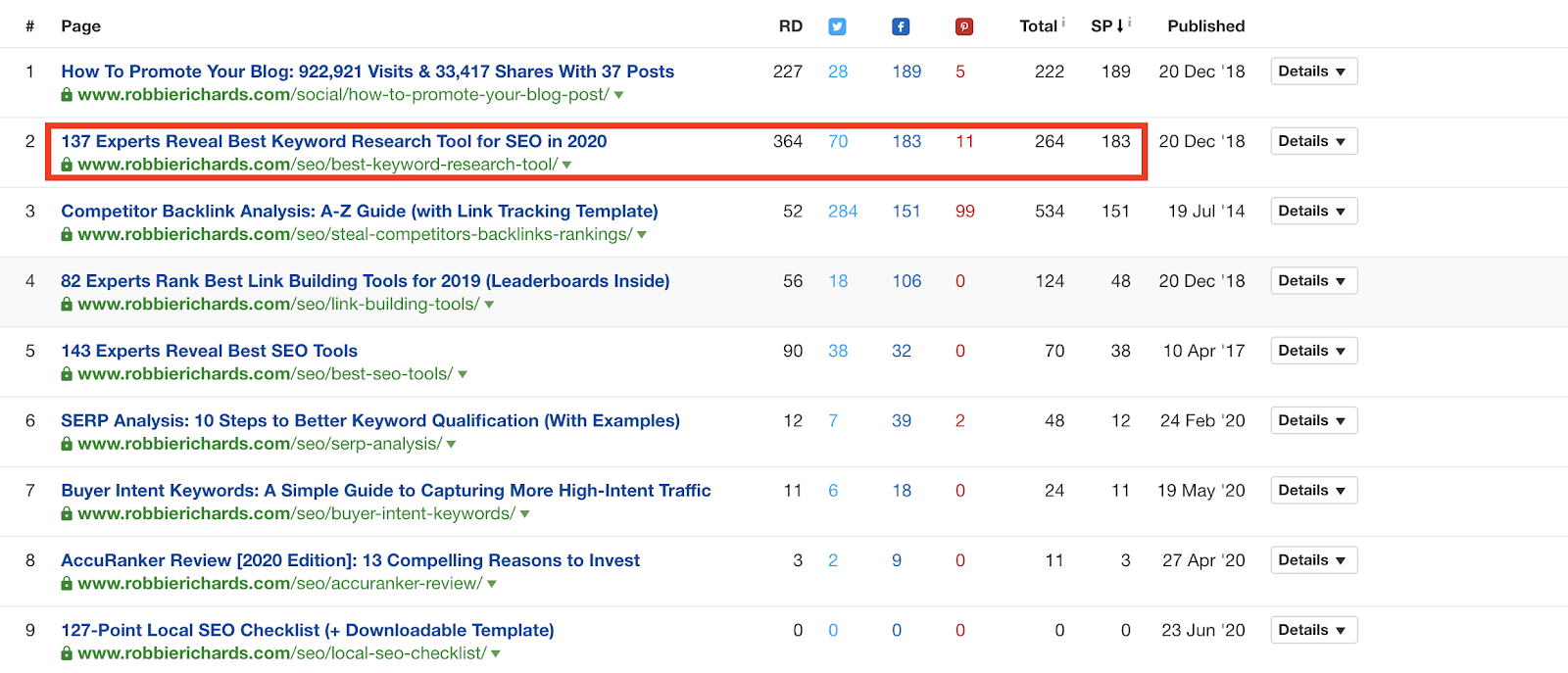
Thus, we can understand that this type of content is both linkable and shareable.
As I hope it is evident by now, both link roundups and expert roundups can work under certain conditions.
The question is:
How can you use link and expert roundups to grow?
This is a twofold answer:
- You can use past roundups to acquire helpful links back to your website.
- You can make expert roundups to get links, shares, and connections with experts in your niche.
In the following section, I’m going to show you exactly how you can do that.
How to Use Link Roundups to Grow
As we noted before, link roundups can be quite effective, in some cases, in helping you acquire new links.
Of course, for this to happen, you need two things:
- Link opportunities – people you can reach out to
- To actually reach out to people and start building relationships
You can do that manually – or with ease using a SEO tool like Respona.
Let’s see how the manual process works first, and then switch to our tool.
Here are some operators you can use when it comes link roundups, according to Quick Sprout:
- “Keyword” + “link roundup”
- “Keyword” + “weekly roundup”
- “Keyword” + “weekly link”
- “Keyword” + inurl:roundup
- “Keyword” + intitle:roundup
- “Keyword” + best recent posts
- “Keyword” + best blogs of the week
For the sake of example, we’ll be using the second one, “Keyword” + “weekly roundup”.
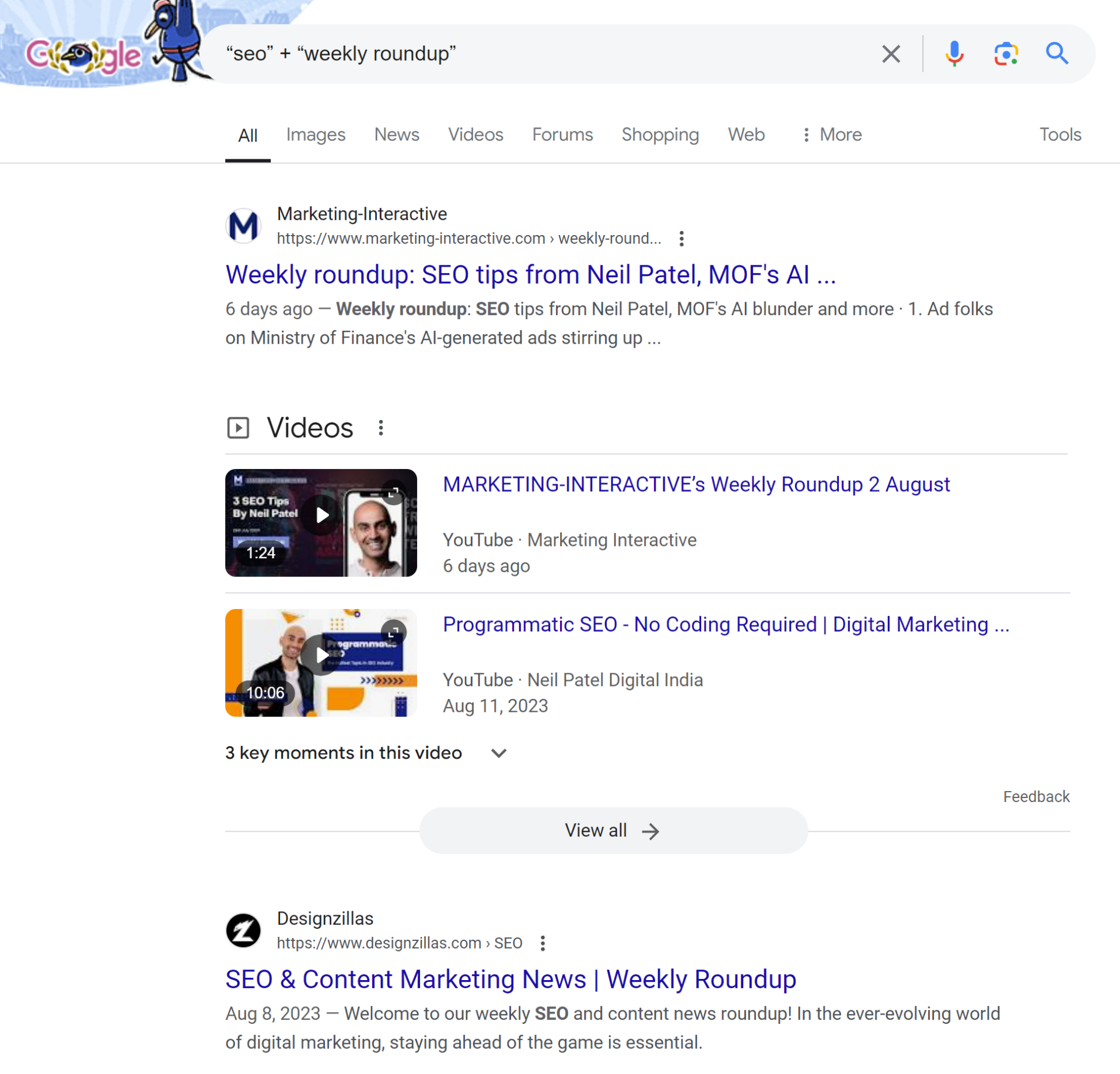
From here, choose the roundups you’d like to get included on, and start looking for email addresses.
The problem with this approach is it takes forever.
Let’s see how Respona can automate roundup link building for you.
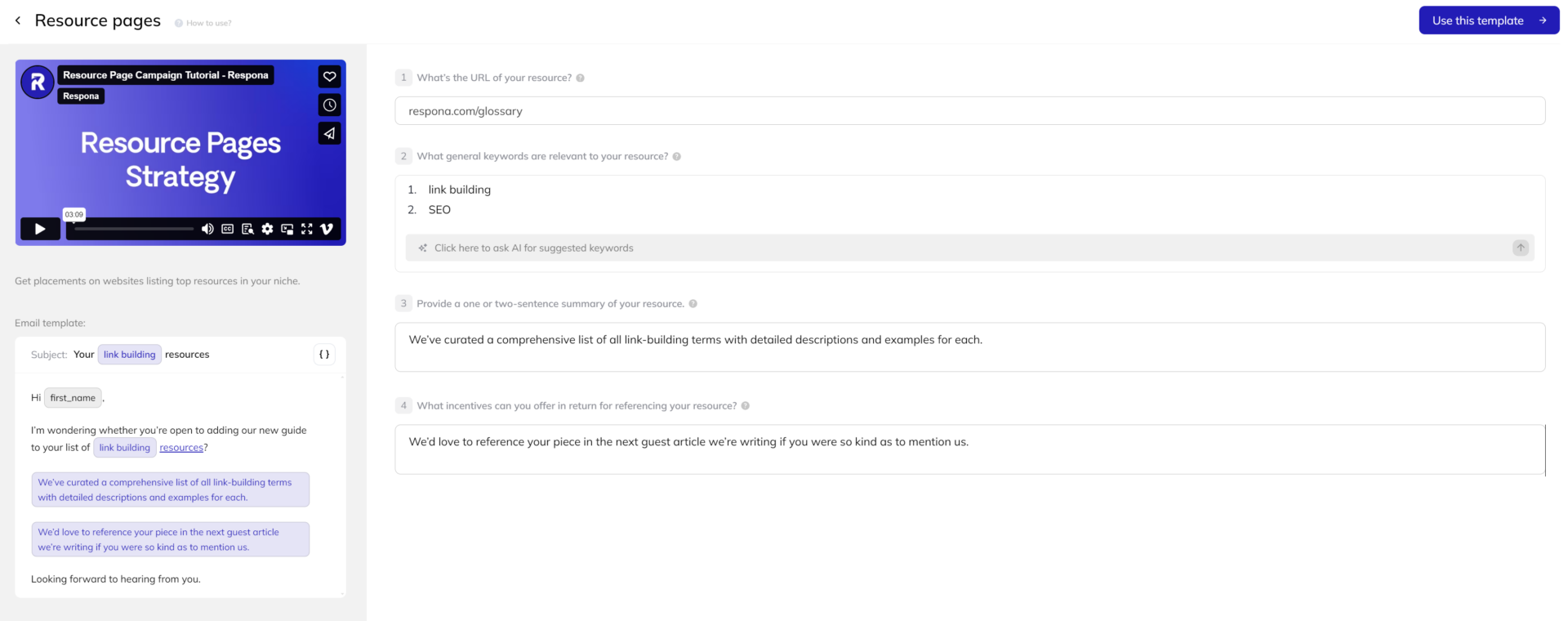
First, paste the URL of your valuable resource into the first field.
Next, input the general keywords related to your resource in the second field. These keywords should be relevant to your content and popular within your industry. We also recommend using AI keyword suggestions to greatly broaden your search.
In the third field, provide a concise summary of your resource in one or two sentences. This summary should highlight the key points and value proposition of your high quality content.
Finally, mention any incentives you’re willing to offer in return for being included in the link roundup, such as social media shares or reciprocal linking.
Respona’s campaign template for link roundups will streamline your outreach process in several ways:
- By pre-setting your email outreach sequence specifically tailored for link roundup pitches
- By automatically applying advanced search operators to find relevant link roundup opportunities
- By identifying the best contacts for your link roundup pitches
Once you’ve filled out the link building campaign template, click “Use this template” to proceed to the campaign editor.
The first step is to review your email sequence. Respona’s template is already optimized, but we recommend adding an AI icebreaker variable to personalize each email uniquely and effortlessly.
Next, Respona’s search engine is configured to find recent link roundup link building opportunities related to your keywords. Some of the search operators it uses to identify these opportunities include:
- intitle:(link building) AND (intitle:best OR intitle:top OR intitle:great OR intitle:useful OR intitle:helpful) AND intitle:resources
- intitle:(SEO) AND (intitle:best OR intitle:top OR intitle:great OR intitle:useful OR intitle:helpful) AND (intitle:websites OR intitle:sites OR intitle:blogs)
- intitle:(SEO) AND (intitle:best OR intitle:top OR intitle:great OR intitle:useful OR intitle:helpful) AND intitle:links
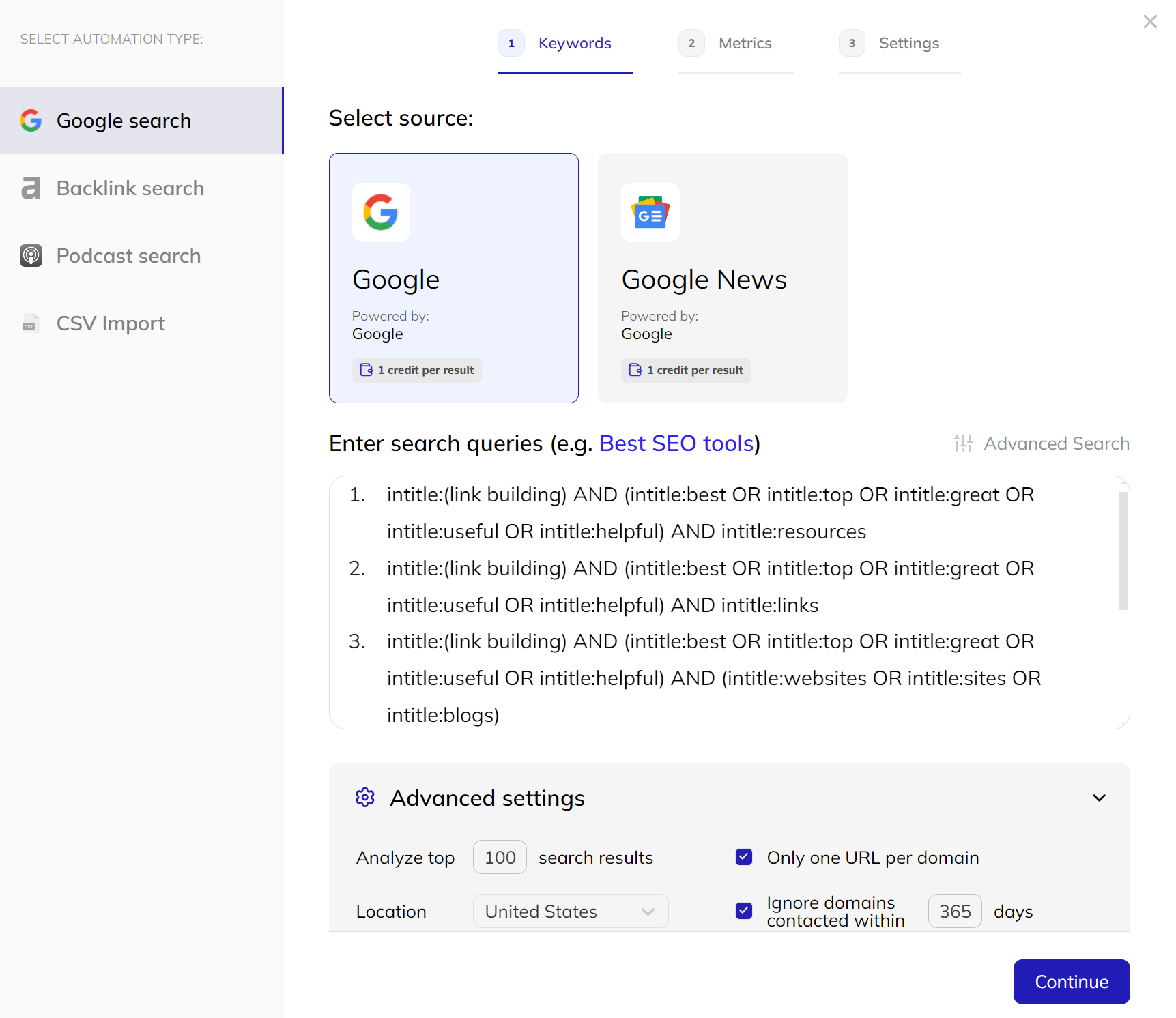
You won’t need to adjust these operators, just click “continue” and apply some SEO filters to refine your results further.
Once you’ve filtered your results, click “continue” to access Respona’s contact finder and AI personalization settings. Respona will automatically locate and verify the best email addresses for your targets, enhancing your email deliverability.
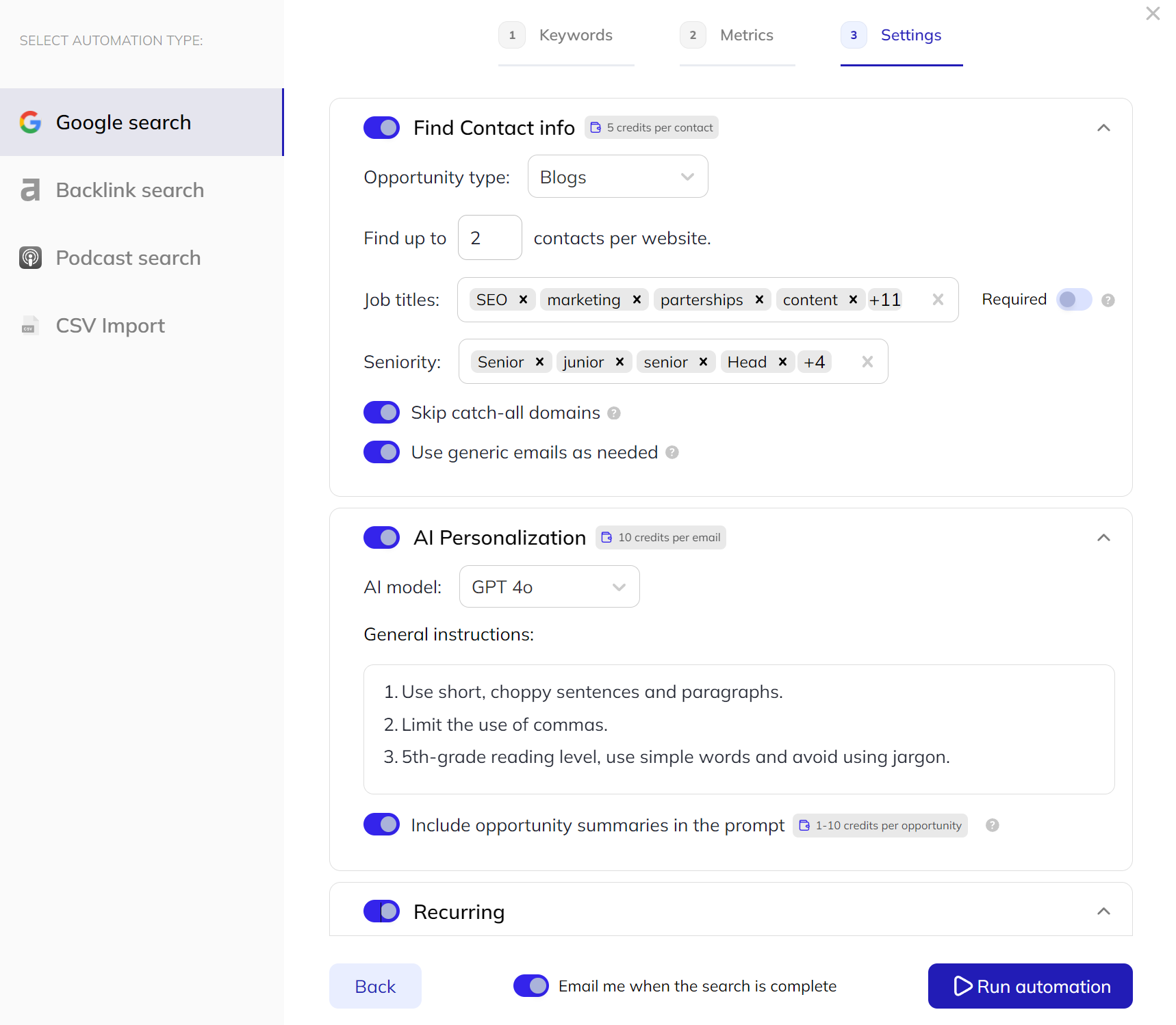
For AI personalizations, we suggest providing a few examples of your previous personalized pitches to help train the AI to match your style and tone.
You can also enable the recurring toggle to re-run your search periodically and capture new opportunities that might arise.
After clicking “Run automation,” Respona will start showing results along with their contact information on your screen.
Concurrently, it will personalize your AI variables. Since it’s all done in the cloud, you don’t have towait; you can proceed to the final step once the automation is complete.
In the final step, you can review and manually edit the AI-generated personalizations to ensure they align perfectly with your outreach strategy.
Additionally, Respona identifies LinkedIn profiles of your roundup curators, and we recommend sending them a connection request to increase the likelihood of a reply.
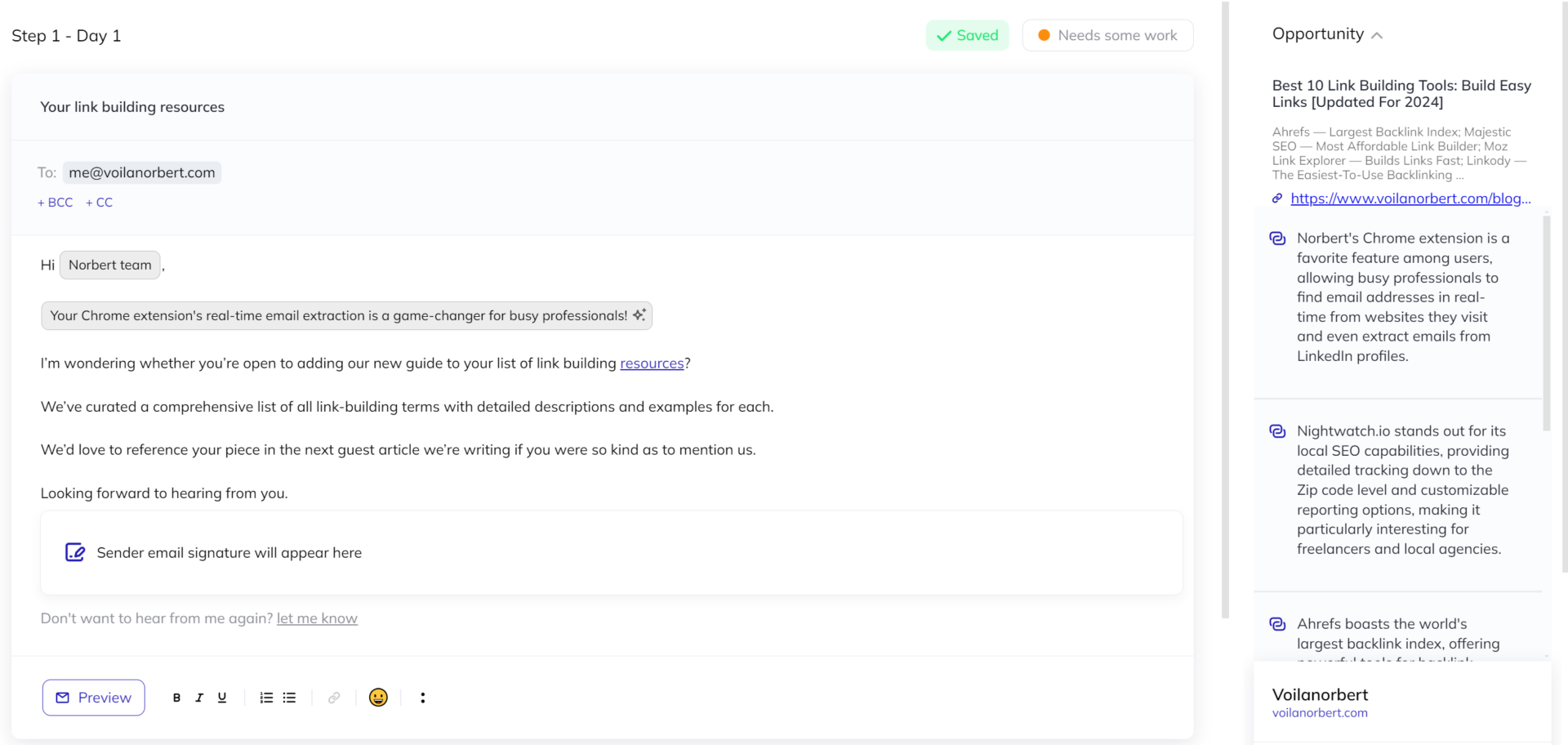
Following these steps will streamline your link roundup placement process and help your content gain the visibility it deserves.
Bonus: How to Organize an Expert Roundup
As I’ve discussed several times throughout this post, there is a major difference between link and expert roundups.
The way to identify link roundup opportunities is different from identifying opportunities for an expert roundup.
I’d say that reaching out to people in your industry to get them to participate in an expert roundup is way more difficult than reaching out to link roundup opportunities.
Let me give you an example.
The following expert roundup, published on Sumo, features 34 cold email subject lines by 34 different marketing professionals who’ve used them.
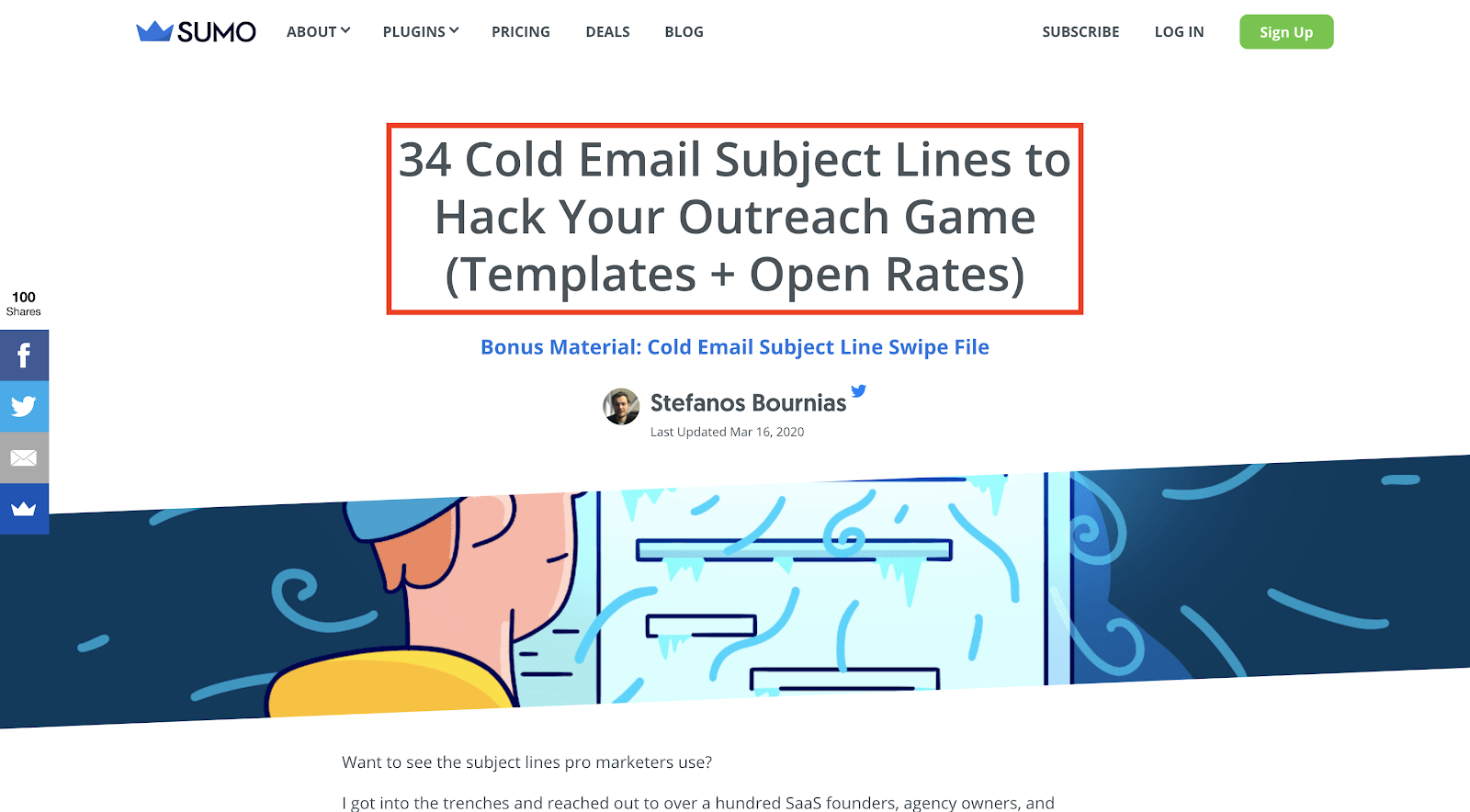
Can you imagine what it’s like reaching out to each of these folk — especially if you’re new to the industry — and asking them to participate in your roundup?
Assuming that you manage to reach out to them via email (using your Gmail account) or by reaching out on a social media platform, how will you keep track of the conversations, send follow-up emails, and do everything it takes to get a reply?
As you can imagine, you need a much more streamlined process and a software that will help you automate the process.
Enter: Respona
Let’s see how you can use the tool to make a list of prospects, find their contact information, and reach out to ask them to participate in your expert roundup post.
First of all, you need to make a list of prospects you’d like to participate in your SEO expert roundup post.
For the sake of example, we’ll assume that you want to create a roundup blog post around SEO; thus, you’re looking for SEO experts who’ve already contributed to a roundup around SEO topics.
To find them, we’ll conduct a simple search using the following Google search operators:

Here’s what you’ll see next:
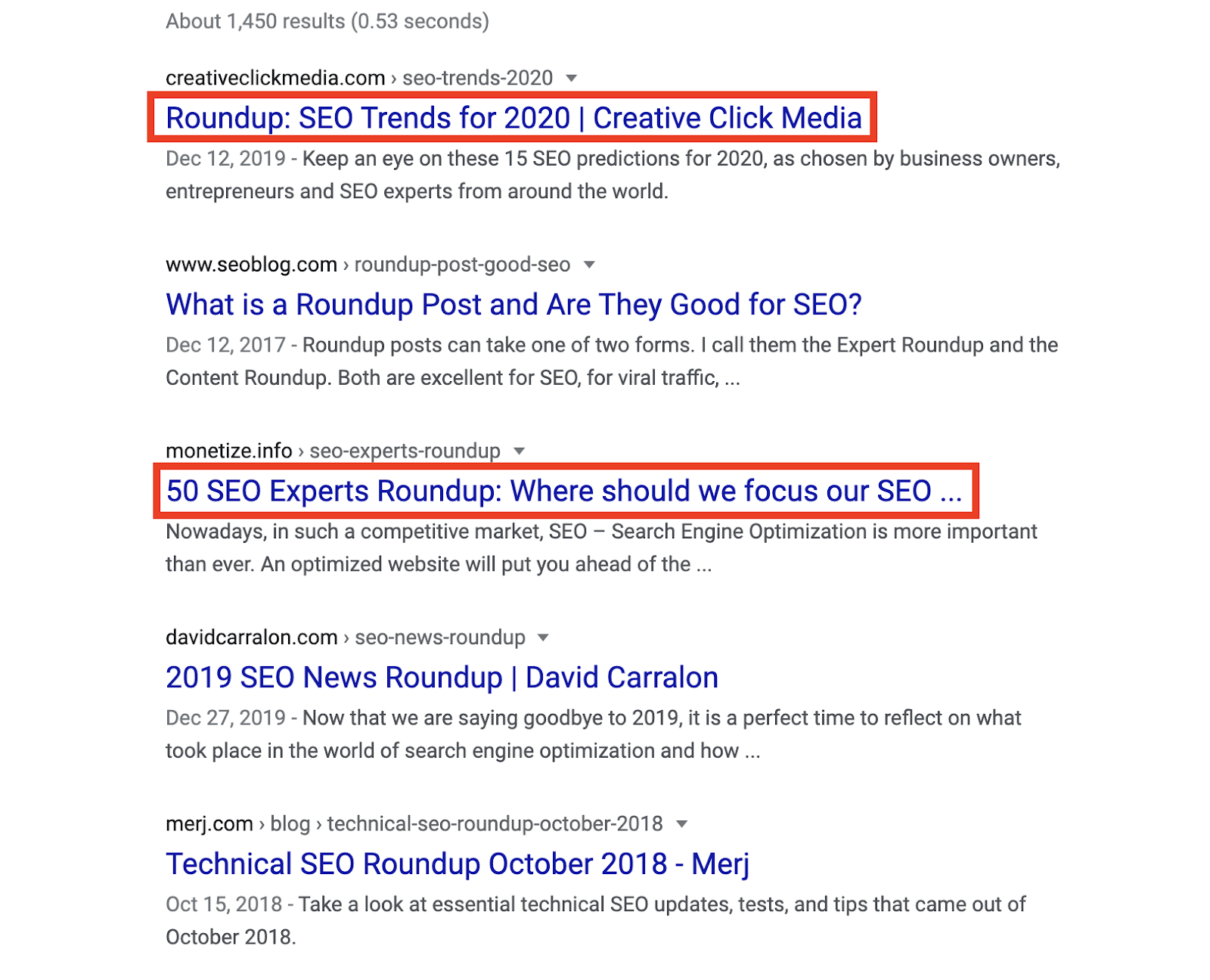
Some of those results seem promising because they contain a good number of experts that have contributed to the post.
For example, take a look at the following list of experts included in one of the top results for our search query:

This is a great list to start from.
The good thing about it is that it gives you everything you need to get started; their name and website.

What you need to do next is create a csv file with the following columns:
- First name
- Last name
- Referring URL (the URL of the roundup post you found the expert)
- Website URL (the URL of the expert’s website)
- LinkedIn profile (optional)
Here’s how your csv file will look like:
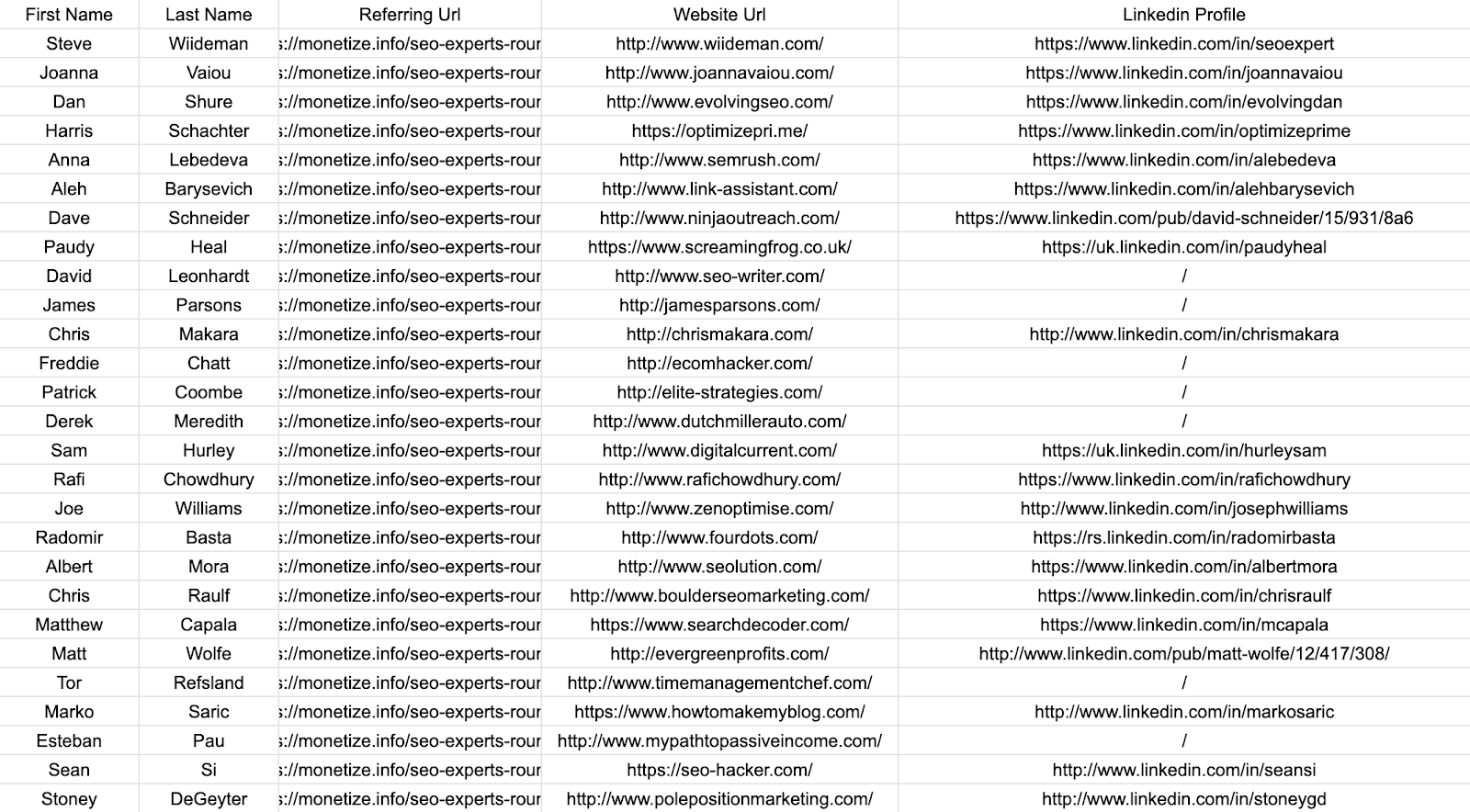
As you can imagine, when contacting someone for the very first time, it’s not easy to get a reply.
In fact, according to a recent study by Backlinko, most cold emails sent nowadays don’t get a reply.

This is why you need to add as much information and context as possible to your email; so that you have actual chances of getting a reply.
Author’s Note: In our example, we made a list of prospects using only the above search result. That list contains 50 SEO experts we can, potentially, reach out to. If you want to maximize your chances of getting replies for your expert roundup, make sure to add as many prospects as possible.
Since Respona is our tool of choice when it comes to contacting the experts we’ve gathered from various lists, the next thing that we need to do is open Respona and start a new campaign.
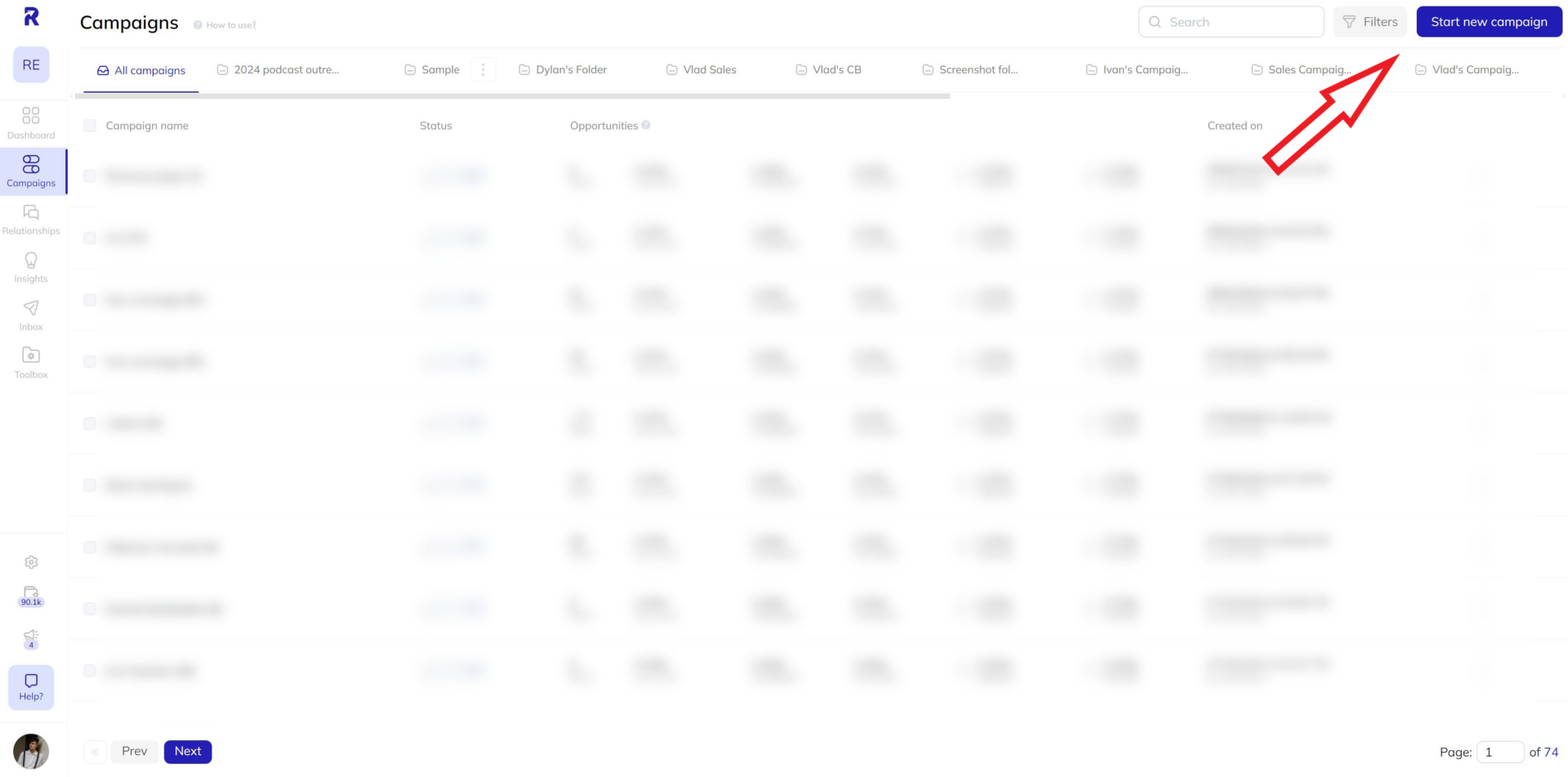
Instead of choosing a campaign template, let’s go for an advanced campaign and get straight into the campaign editor to save time.
We’ll skip the sequence creation step since we already described it above.

In step 2 – Opportunities, you’ll need to select the “СSV Import” mode.
Next, you need to click “Upload .csv File” to upload the file we’ve created.
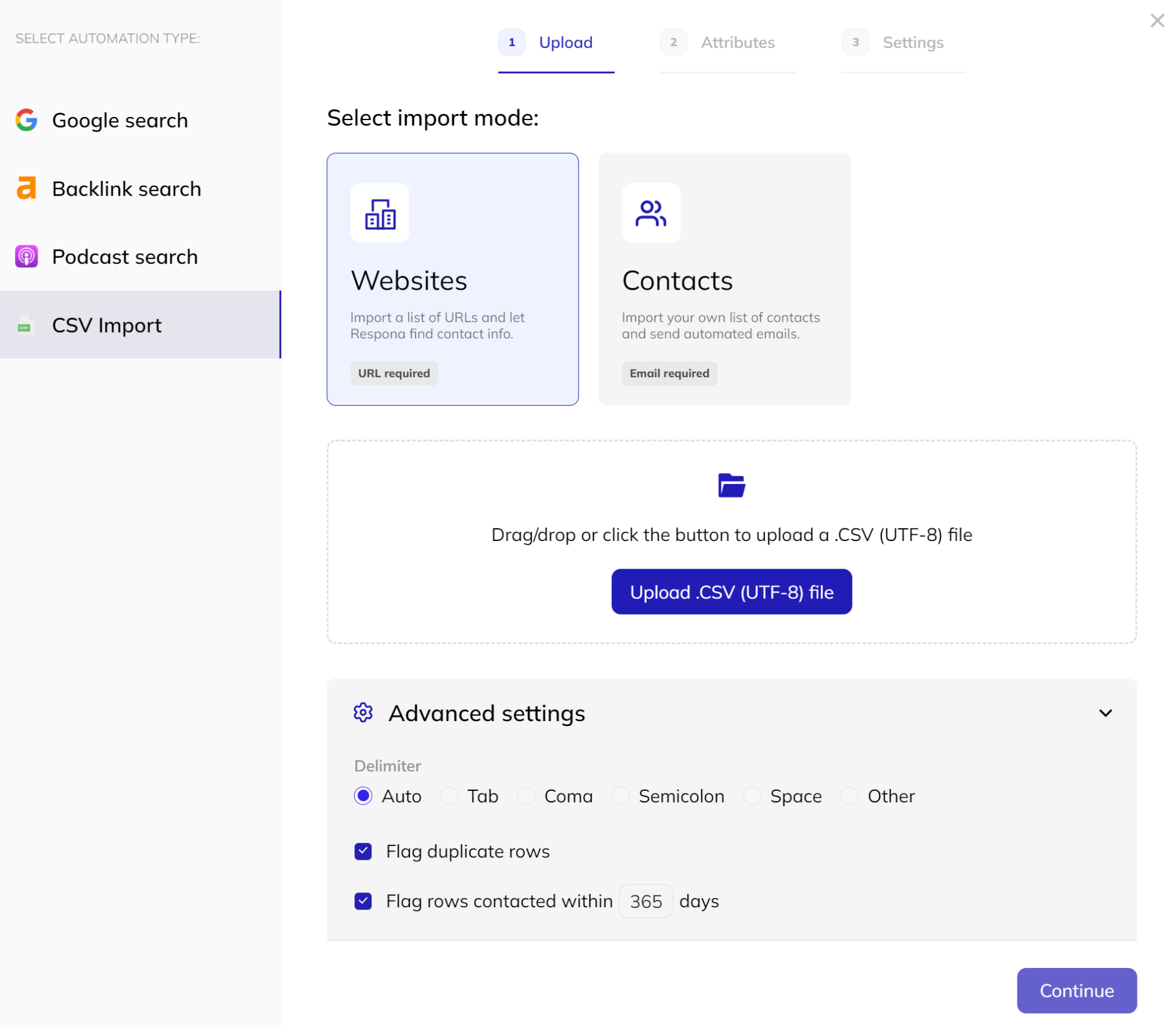
If you have a delimiter on your csv file, you need to choose it from the list or choose “Other” and add it there.
Author’s Note: If you don’t have a delimiter, just leave the advanced settings as they are at this step.
Next, we need to map the attributes to Respona fields.
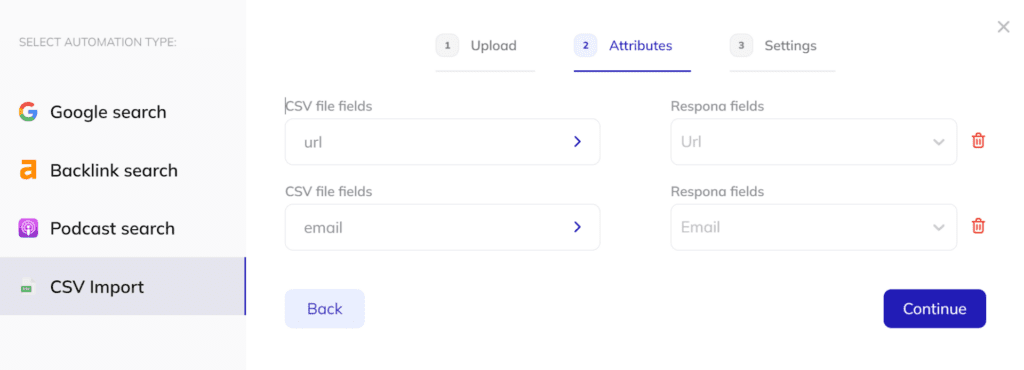
Respona will tell you how many of the attributes were successfully mapped and how many we still need to map.
After clicking “Continue”, you can follow the same steps as before: enable the contact finder, waiit for it to complete, and then personalize your opportunities.
Just make sure to be honest, respectful of people’s time and attention, and try to explain as clearly as possible what your expert roundup is going to be about.
Let’s wrap this up and close with some final thoughts.
Link building cheat sheet
Wrapping Up
So there you have it.
You now know what link roundups are and how to acquire quality links using them.
Most importantly, you’ve learned how to use those two types of roundup to grow.
One of the biggest takeaways of this post is that…
- Link roundup posts can be effective for acquiring links
- Expert roundup posts can be effective for acquiring links, social shares, guest post opportunities and connecting with experts within your niche.
Nothing can stop you from using both as part of your strategy.
Just follow the process I shared with you, and I’m sure you’ll have success using both tactics.
Don’t hesitate to start your 14-day free trial with Respona as well!
Good luck!






